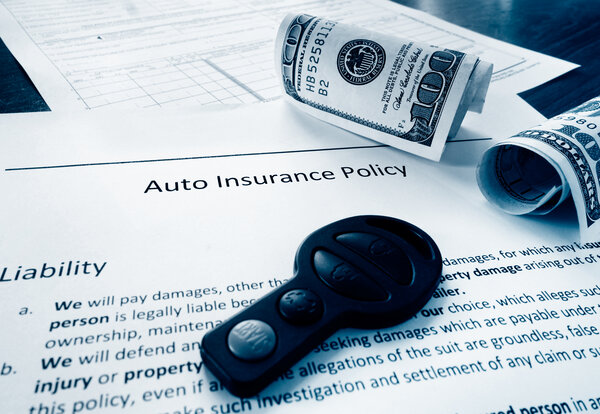Lifestyle
Essential car insurance considerations for summer

When summer arrives, there’s a newfound freedom when you’re on the road with music blaring. Whether you’re planning road trips, commuting to work, or just working a side job, understanding the nuances of car insurance can save you from unexpected costs and stress. Insurance companies have their own policies, which means coverage can vary from person to person. This is a general guide to help you understand personal auto insurance policy and some other coverage issues that you may not know exist.
Understanding basic coverage
The personal auto policy, also known as PAP, is a package policy, much like homeowners insurance, in that it bundles liability and property damage coverage into one form. The following discussion provides an overview of the risks of loss associated with individuals.
There are 4 basic types of coverage in the PAP:
- Part A—Liability Insurance: This covers the damage you cause to others in the event of an accident. It generally includes both liability for bodily injury and liability for property damage.
- Part B – Medical Payment Coverage: This will reimburse you for medical expenses if you or your passengers are injured while in a covered car or injured as a pedestrian.
- Part C – Uninsured Motorist Coverage: This protects you if you are involved in a collision or accident with a driver who is not insured.
- Part D – Coverage for damage to your car: This coverage is split into two categories: collision and other collision, also known as comprehensive coverage.
- A)Collision Insurance: This compensates for damage to your car as a result of a collision with another vehicle or object.
- B)Other than collision (comprehensive): This covers non-collision-related damage, such as theft, vandalism and natural disasters.
The importance of underinsurance for motorists
One of the most crucial, yet often overlooked aspects of auto insurance is underinsured motorist (UIM) coverage. It may look like uninsured motorist coverage, but these are two separate coverages; their differences can have major financial consequences for you if you are involved in an accident.
As mentioned above, in the event of a no-fault collision or accident where the other driver has no insurance, your policy’s Part C uninsured motorist coverage will put you in the shoes of the at-fault driver and pay your medical bills. Part D coverage for damage to your car covers the damage to your car. But what happens if the person responsible is insured, but the coverage is not sufficient?
Unfortunately, there are times when the injuries sustained from the damage are serious and exceed the policy limits of the at-fault driver. This is especially true in states that allow low liability limits, such as Pennsylvania, where the limits for bodily injury per person are $15,000, $30,000 for all people injured in an accident, and $5,000 for property damage (such as your vehicle). .
If you don’t have underinsured motorist coverage and have medical bills worth $50,000, the at-fault carrier can pay you up to $15,000 (their policy limit). You will be responsible for the remaining $35,000 in medical bills. Likewise, if your vehicle is totaled in this accident, you will receive up to $5,000 from the carrier to obtain a new car.
In a perfect world, every driver would have adequate insurance, but the reality is different. According to the Insurance Research Council, about one in eight drivers is uninsured. Underinsured motorist coverage ensures that you won’t have to pay expensive medical bills or repair costs if you encounter an underinsured or uninsured driver.
Rental car coverage
Summer means traveling, and that may mean renting a car. It’s essential to understand how rental coverage works within your auto policy. Some policies only cover rental cars if your own car is in the shop due to an accident. The policy discusses coverage for a “temporary, replacement vehicle” if the covered car is damaged by a collision or other non-collision accident. This means that if you rent a car for a holiday or business trip, you may not be covered under your regular car policy.
If your policy does not provide comprehensive rental coverage, consider purchasing the insurance offered by the car rental company.
Gig drivers
If you want to supplement your holiday fund with some side items, insuring your car can become difficult. Gig drivers use their personal vehicles to offer rides to passengers or deliver food/beverages via app-based platforms.
The PAP does not cover the car if you have an accident during a performance (for example if you are driving a passenger as a taxi service or delivering food). It may not cover the other vehicle or person(s) involved in the accident if you are at fault. Many of these app-based platforms have insurance you can purchase, but that policy doesn’t take effect until you’re “on the clock.” In other words, the policy isn’t in effect unless you have a passenger or are delivering food.
Here are a few steps to ensure you are well prepared for performances:
- Check your policy: Take a good look at your current car insurance. Make sure you understand what is covered and identify any gaps that could leave you vulnerable. If you are a gig driver, you may need commercial auto insurance.
- View the gig policy: Some of the policies offered by the gig employers state that they are a “surplus” of your policy. This means that their policy only takes effect after your coverage limits have been exhausted.
- Contact an insurance agent: If you have any questions or would like to update your coverage, please contact an insurance agent. They can give you personal advice based on your driving behavior and needs.
Finally
Understanding the world of car insurance can be tricky, but it’s a crucial step in protecting yourself and your finances. By understanding the importance of underinsured motorist coverage, the nuances of rental car insurance, and the issues surrounding driving, you’ll be well-equipped for the adventures summer has to offer.
Author biography
Chantal M. Roberts, CPCU, AIC, RPA, calls herself an insurance nerd with more than 20 years of experience as a multi-specialty claims adjuster. She is also an award-nominated author who has previously written two books, one for people starting mid-career, The art of adaptation: Writing down the unwritten rules for handling claimsand a creative non-fiction story about Molière, A Love Story: How the Heartland Fell in Love with a 400-Year-Old French Comic Playwright. Her new book, Once Upon A Claim: fairy tales to protect your assets (May 11, 2024), provides consumers with a better understanding of property and casualty insurance and claims.













